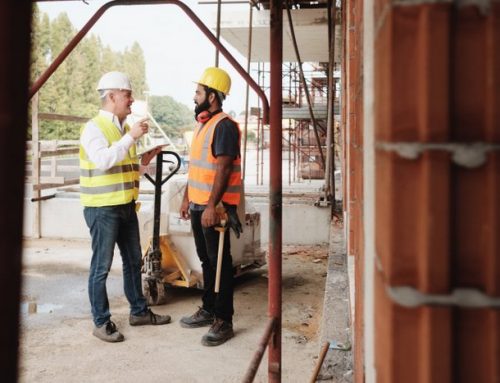Accidents at work and stress
According to the results of the research conducted by Eurostat in recent years, physical and psychological stress were the cause of almost 25% of accidents at work. From April 2019, statistics on accidents at work in the Netherlands in 2018 are available. The analysis states that the psychological trauma, which can also be caused by stress, affects women and men in all sectors. In terms of cultural differences due to the different origins of employees, 3 determined groups were comparable in terms of psychological accidents. In the construction sector, 25% of respondents indicated that stress and work pressure are high. Certainly for this sector this is a very serious risk factor, due to the often dangerous working circumstances (e.g. working at heights, working with heavy equipment or in difficult conditions). It is worthwhile to analyze, learn to identify and prevent the causes of stress. It is clear that reducing stress at work has a direct effect on the culture and safety of work, productivity and the quality of life of employees.
The effects of stress
Stress is a natural response of the body to a threat. The unique features of each individual determine which situation may be experienced as stress. Although stress does not pose a threat to health in the short term, long-term production of adrenaline and cortisol hormones can have a negative effect on health. The most common and most frequently observed effects of stress are:
- sleep problems
- fear
- depression
- digestive problems
- headaches
- heart disease
- weight gain
- impairment of memory and concentration
The causes of stress at work
First of all, it is worth considering the sources of stress that affect the safety of employees. The following reasons are mentioned in an article published in the Journal of Occupational and Environmental Medicine:
- long working days, workload and pressure from colleagues and managers
- the impact of the loss of control over working time on personal life
- lack of control over work and lack of participation in decision making
- poor social support, lack of support in the company
- unclear role of management and work, as well as a poor management style
- violence at work
Above mentioned factors are universal and apply to every working area. In the case of construction and renovation work, compliance with VCA rules is crucial. Unfortunately, one of the consequences of stress are wrong decisions, which are a direct health hazard and sometimes even life threatening. Among the many factors that increase stress on construction site, we can name the following:
- missing of materials delivery within the prescribed period
- changes in weather conditions or poor project preparation
- failures of machines / equipment and downtime
- communication problems and cultural differences are a source of stress in groups that consist of employees of different origins
- unreported absence of colleagues and / or problems finding qualified employees
Of course, this list does not exhaust all sources of stress, but it indicates which preventive measures can be taken to limit them.
Fighting stress at work
Preventing situations that can contribute to a longer working time is crucial. It is worth taking note of the ways of stress management, but one shouldn’t be limited to fighting the effects of stress.
It is recommended for the management to be aware of the sources of stress. Thus, it is worth taking note of working in a multicultural team, ways of effective communication and managing employees, how to ensure that employees have appropriate training and mutual trust in professional service of equipment for a particular function where necessary .
At the organizational level it is possible to:
- make sure that during recruitment the employee is made aware of the duties and workload
- ensure that the correct number of employees is assigned to the task
- provide a realistic work plan and take into account, if possible, preferences of employees with regard to working time (for example in shifts)
- ensure team trust and psychological support
- Ensure that the supervisor can identify people who are under stress and monitor their condition
Source: BMJ Journals, Eurospat, ResearchGate




